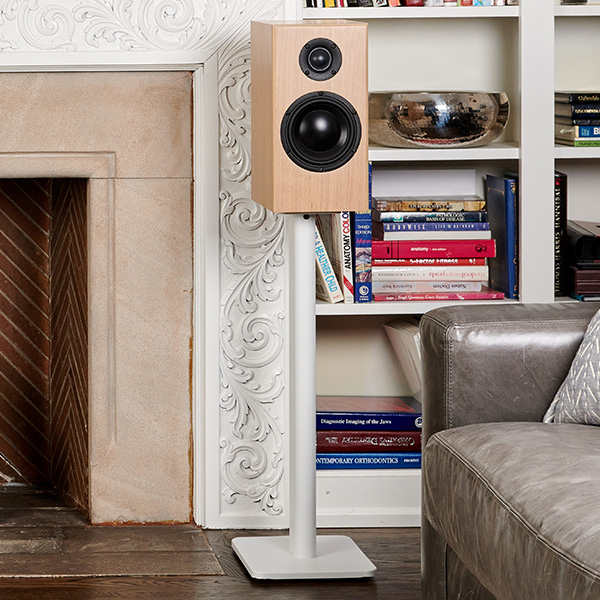When it comes to enjoying high-fidelity audio, many enthusiasts believe that upgrading components is the only way to enhance their listening experience. However, there are several ways to improve the sound of your existing 2-channel audio system without purchasing new equipment. Here are some expert tips and tricks that can help you optimize your setup and get the most out of your current gear.
1. Optimize Speaker Placement
Speaker placement is crucial for achieving the best sound quality. Here are some guidelines to follow:
- Distance from Walls: Place your speakers 1-3 feet away from walls to avoid unwanted reflections that can muddy the sound.
- Symmetry: Ensure that your speakers are symmetrically placed in your room, with equal distance from side walls and the same distance from the listening position.
- Toe-In: Angling your speakers slightly towards the listening position can improve stereo imaging and create a more focused soundstage.
- Height: Make sure the tweeters are at ear level when you’re seated in your primary listening position.
2. Room Acoustics
The acoustics of your room have a significant impact on sound quality. Here are some ways to improve them:
- Add Rugs and Curtains: Soft furnishings like rugs, curtains, and upholstered furniture can help absorb sound and reduce echo.
- Use Acoustic Panels: Install acoustic panels on the walls to reduce reflections and absorb excess sound. This can help create a more controlled and balanced sound.
- Bass Traps: Place bass traps in the corners of the room to manage low-frequency resonance and improve bass response.
3. Cables and Connections
The quality of your cables and connections can also affect sound quality. Consider the following:
- Check Connections: Ensure all connections are tight and secure. Loose connections can cause signal loss and degrade sound quality.
- Cable Management: Keep power cables and signal cables separated to avoid interference.
- Upgrade Cables: While it’s not necessary to buy the most expensive cables, using well-built, high-quality cables can make a difference in sound clarity and detail.
4. Power Supply
A stable and clean power supply is essential for optimal audio performance. Here’s how to ensure your power supply is up to the mark:
- Use a Power Conditioner: A power conditioner can filter out noise and provide a consistent power supply to your audio components.
- Dedicated Circuit: If possible, use a dedicated electrical circuit for your audio system to avoid interference from other household appliances.
5. Speaker Isolation
Isolating your speakers from the surface they are placed on can reduce vibrations and improve sound clarity. Here’s what you can do:
- Use Speaker Stands: For bookshelf speakers, use dedicated speaker stands to isolate them from the floor and position them at the correct height.
- Isolation Pads: Place isolation pads or spikes under your floorstanding speakers or subwoofers to minimize vibrations and resonance.
6. System Calibration
Calibrating your system ensures that it is optimized for your specific listening environment. Here’s how to go about it:
- Use an SPL Meter: A sound pressure level (SPL) meter can help you balance the volume levels of your speakers to achieve a cohesive soundstage.
- Room Correction Software: Some audio systems come with room correction software that can automatically adjust your system’s settings to suit your room’s acoustics.
7. Listening Position
Your listening position, often referred to as the “sweet spot,” is crucial for an optimal audio experience. Here’s what to keep in mind:
- Form an Equilateral Triangle: Position your seating area so that it forms an equilateral triangle with your two main speakers. This ensures equal distance from each speaker, providing a balanced stereo image.
- Height and Angle: Ensure that your ears are at the same height as the tweeters when seated. This alignment enhances the clarity and detail of the sound.
8. Regular Maintenance
Regular maintenance of your audio system can prevent issues and maintain sound quality. Here are some tips:
- Dust Regularly: Dust can accumulate on your components and affect performance. Clean your equipment regularly using a soft cloth.
- Check for Wear and Tear: Inspect cables and connections for any signs of wear or damage and replace them if necessary.
Conclusion
Improving the sound of your existing 2-channel audio system doesn’t always require new components. By optimizing speaker placement, enhancing room acoustics, ensuring high-quality connections, maintaining a stable power supply, isolating your speakers, calibrating your system, and positioning yourself correctly, you can significantly enhance your listening experience.
If you enjoyed these tips and want to learn more about optimizing your audio setup, be sure to check out our News + Reviews section for similar articles and expert advice.
By following these recommendations, you’ll be able to enjoy a richer, more immersive audio experience from your existing 2-channel system. Happy listening!




